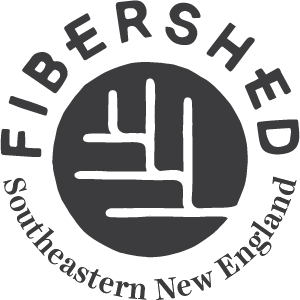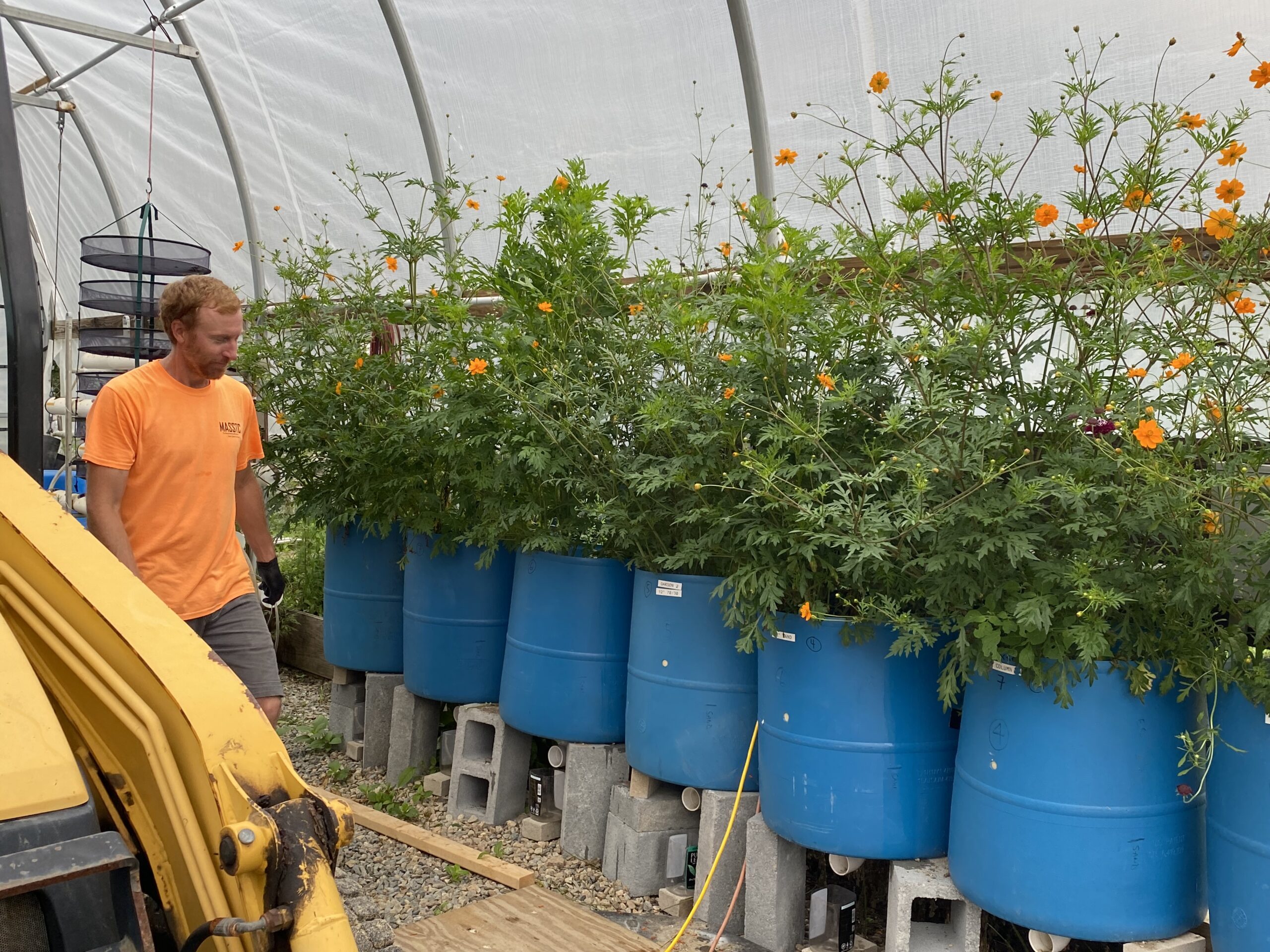
For year two of the wastewater + natural dye project here on Cape Cod at MASSTC (the leading innovative/alternative septic test center in the U.S.), our team looked a lot closer at data surrounding nutrients in the soil from urine fertilizing. While 2022 focused on whether wastewater would impact color and/or growth, (it did!), 2023 was a lot more focused on the ability to scale urine as a fertilizer. Over the course of this year, we looked at urine’s impacts on both the plants as well as the soil.
Over the winter, MASSTC operator and eco-sanitation enthusiast Bryan Horsley and NOFA Mass member and soil enthusiast John Duke and I prepared for our project. What questions did we want answered by the end of the project? How was this going to help Fibershed farmers worldwide? How would this push wastewater education locally in terms of the decline of Cape Cod’s 850 ponds and how wastewater is impacting them severely?
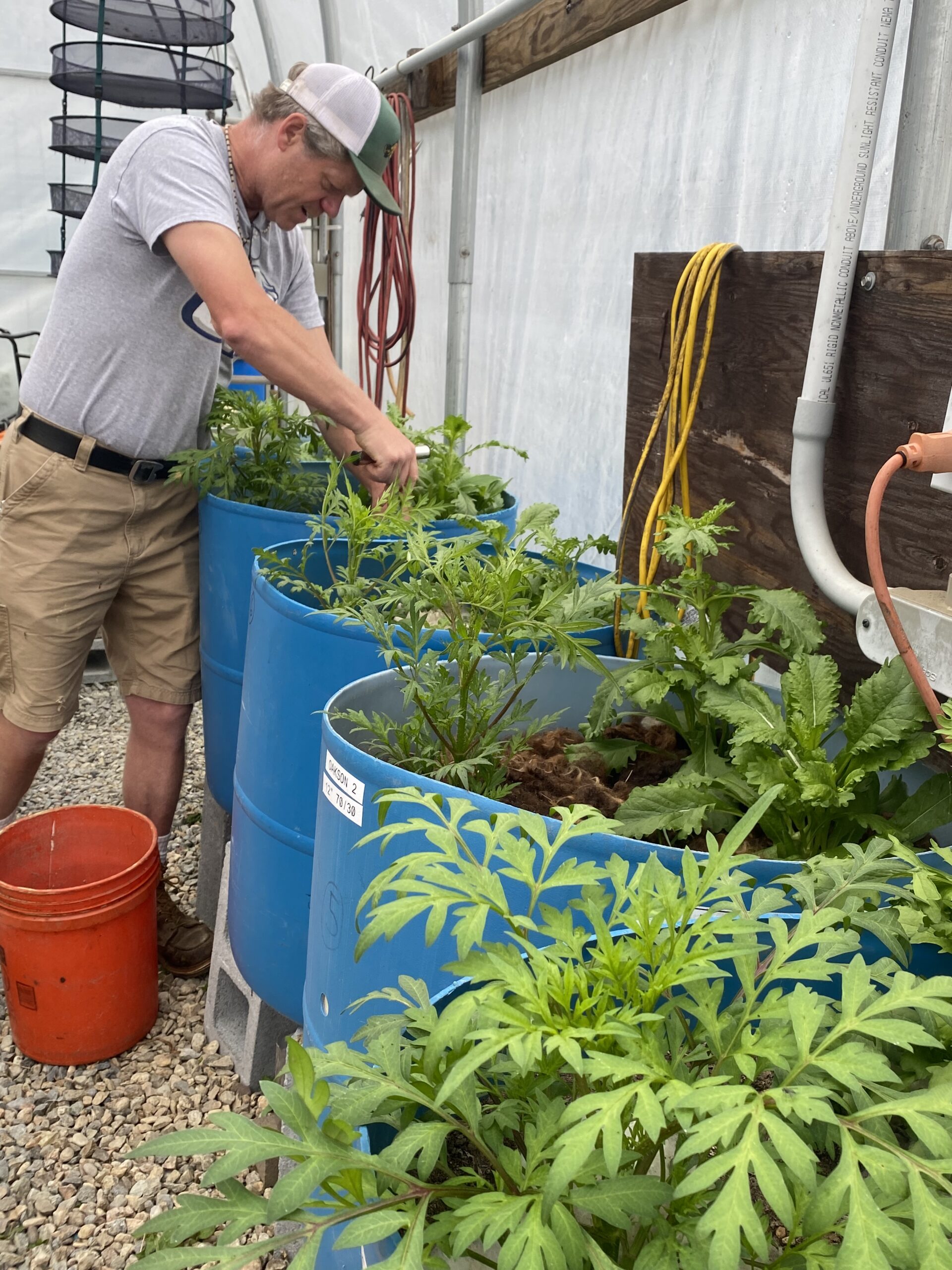
Securing a range of natural dye plant seeds from The Dogwood Dyer, we agreed the project would be grown in 8 barrels that would hold 2 different types of soil. One of the soils would be similar to Cape Cod’s sandy soil and the other would be more like a soil you’d get at a garden center. In those barrels we would grow Sulfur Cosmos and Purple Pincushion flowers, (two rock star natural dye flowers). As an additional piece of the puzzle, I layered waste wool from the Coonamessett Farm on the top of the barrels. As I would learn a little too late in the project, I shouldn’t have done this as it added too many variables to the study (lesson learned!)
From May to September, Bryan and I watered the plants over 53 times with a 10:1 dilution, 3 liters water and 266 ml urine per barrel every two weeks for the barrels receiving urine. For the 4 barrels not being fertilized with urine, we used rain barrel water trying to stay true to “waste” and things we overlook as a resource.
By the second month, it was clear to see the wool was holding moisture in and the urine fertilized barrel’s plants were outpacing the non. But then, the aphids came. The tiny little bugs were all over the urine-fertilized plants which were also growing quickly. John told me that it was probably because the plants were getting maxed out and the bugs like to feed on weak and distressed plants. When he explained to me that fertilizing the plants that frequently with urine was making them into drug addicts, it was pretty eye opening. The plants were gobbling up all that nitrogen and yes growing, even blooming faster and more prolifically than the non-urine fertilized, but it was making them prone to attracting bugs, and wasn’t necessarily helping the soil, just making the blooms come faster. I was so happy to come in one morning to see a small battalion of ladybugs had joined the scene to feast on the aphids.
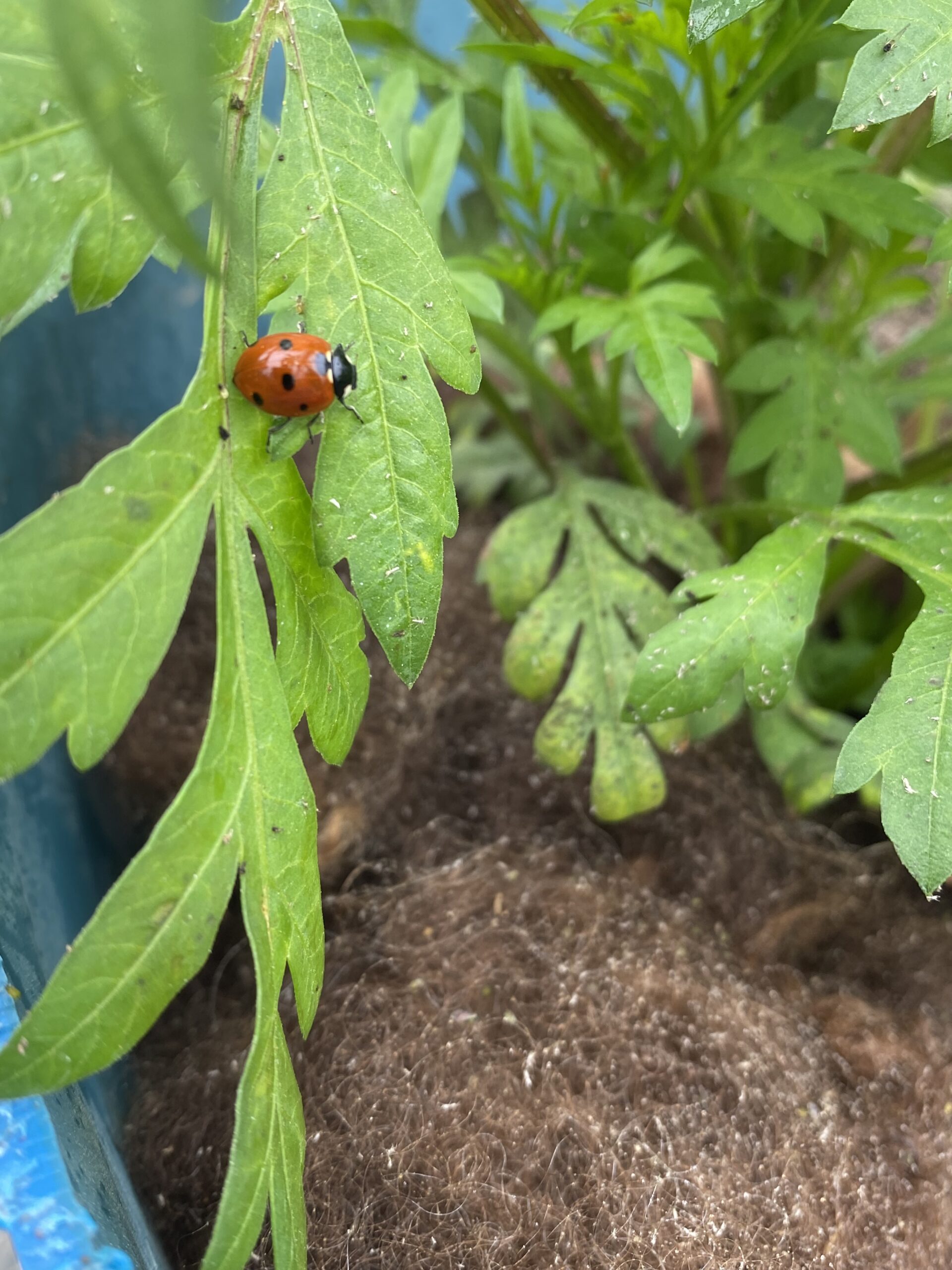
By July, I’d started collecting the blooms and sorting them into non-urine and urine fertilized and drying them out to save for later projects. The cosmos had taken over all the spaces and the pincushion were barely growing (they did make a huge comeback in the late summer/fall). In fact, when I pulled all the foliage apart, I noticed that the only flowers that were growing WERE the urine-fertilized! The non-urine flowers were slow to bloom but lush green and healthy. Nature pacing itself.
I expected to see that I’d have many more cosmos and that was true at the beginning but then, those overly nitrogen-fertilized (drug addict) flowers started turning early. The leaves started getting brittle and rusty looking, the flowers were still coming in but now the non-urine stepped up to the plate. Those flowers started their own wild blooming and in the end, the amount of blooms collected over the course of the experiment came out to be nearly the same. The non-urine fertilized flowers kept blooming into September. As the cosmos started fading, the purple pincushion flowers came to life and took over the barrels. Such a pretty dye. Needless to say, I have A LOT of dried flowers.
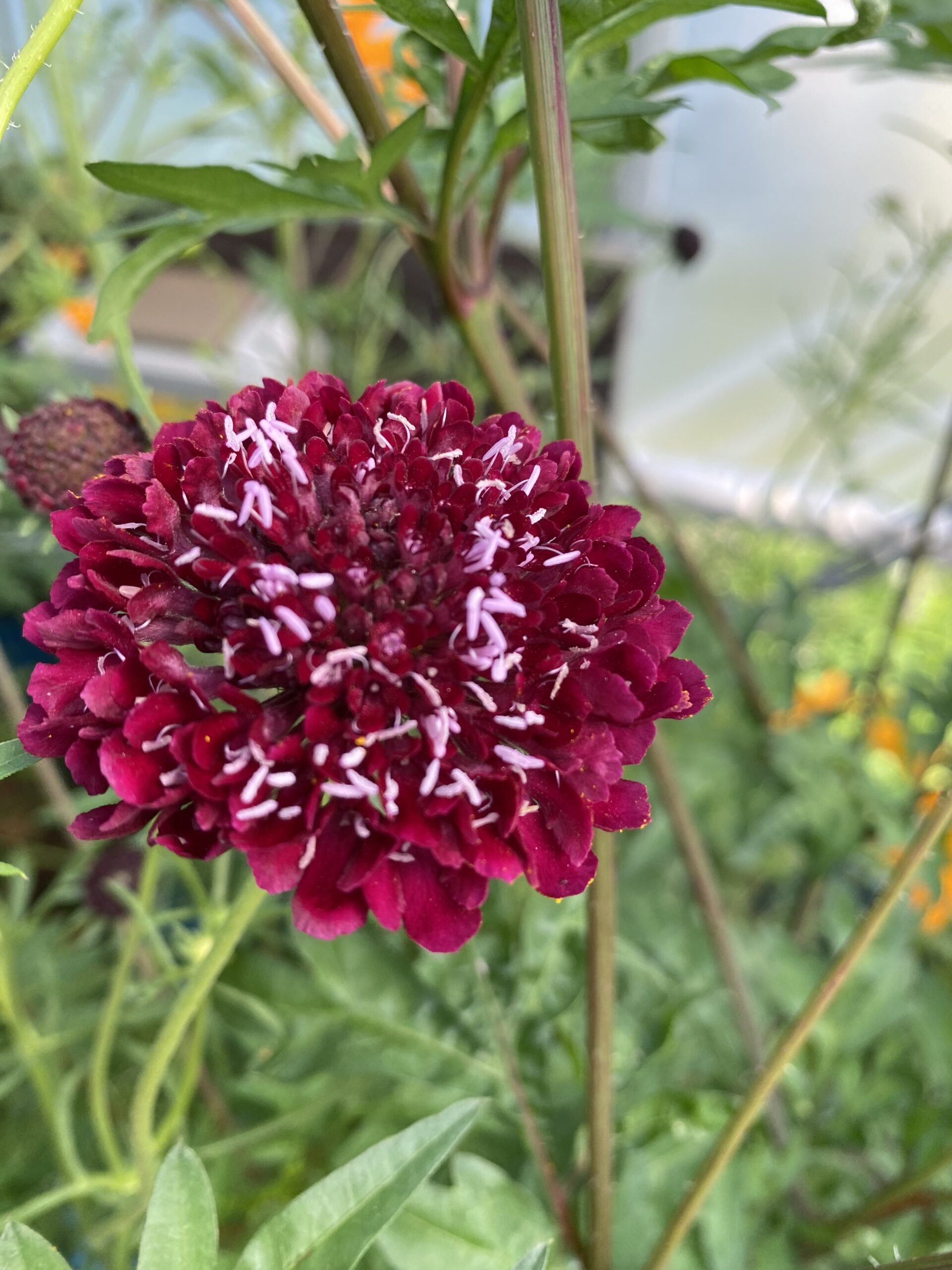
Over the course of the project, Bryan, John and I looked not only at plant progress but soil health. We sent the soil out to Logan Labs in April as well as in September and John also did two on-site soil tests with a microBIOMETER kit to determine microbial biomass and fungal to bacterial ratio (this was to see if the soils are generally productive and the biology is active). I’m happy to share the results of that in an email if you are interested. As a newbie to all of this, I’m not going to try and pretend I’m a soil scientist. I just know what I saw, and based on what John has told me, we don’t really have tons of clear evidence that fertilizing with urine is off the charts incredible, but as a fertilizer, it did its job. If we can divert urine from our local bodies of water and groundwater, and use it as a fertilizer, this seems a real win-win.
Did it help grow healthy soil biomes? Not particularly but it also didn’t destroy the soil. We already have ideas for 2024 on fermenting the urine to help enrich the soil more. We also pulled the plants up at end to weigh them and make some assumptions that the rest of the nitrogen is in the plant. Based on the weight of the plants, the non-urine fertilized plants actually had more root mass.
These are all great baselines to keep building off of. During the project, we also got great feedback from the Rich Earth Institute (my new heroes) on how much we were fertilizing (too much) and some great tips moving forward (eliminate too many variables). Take some time to peruse their site to learn tons about how farmers in Vermont are using urine as a fertilizer to great success.
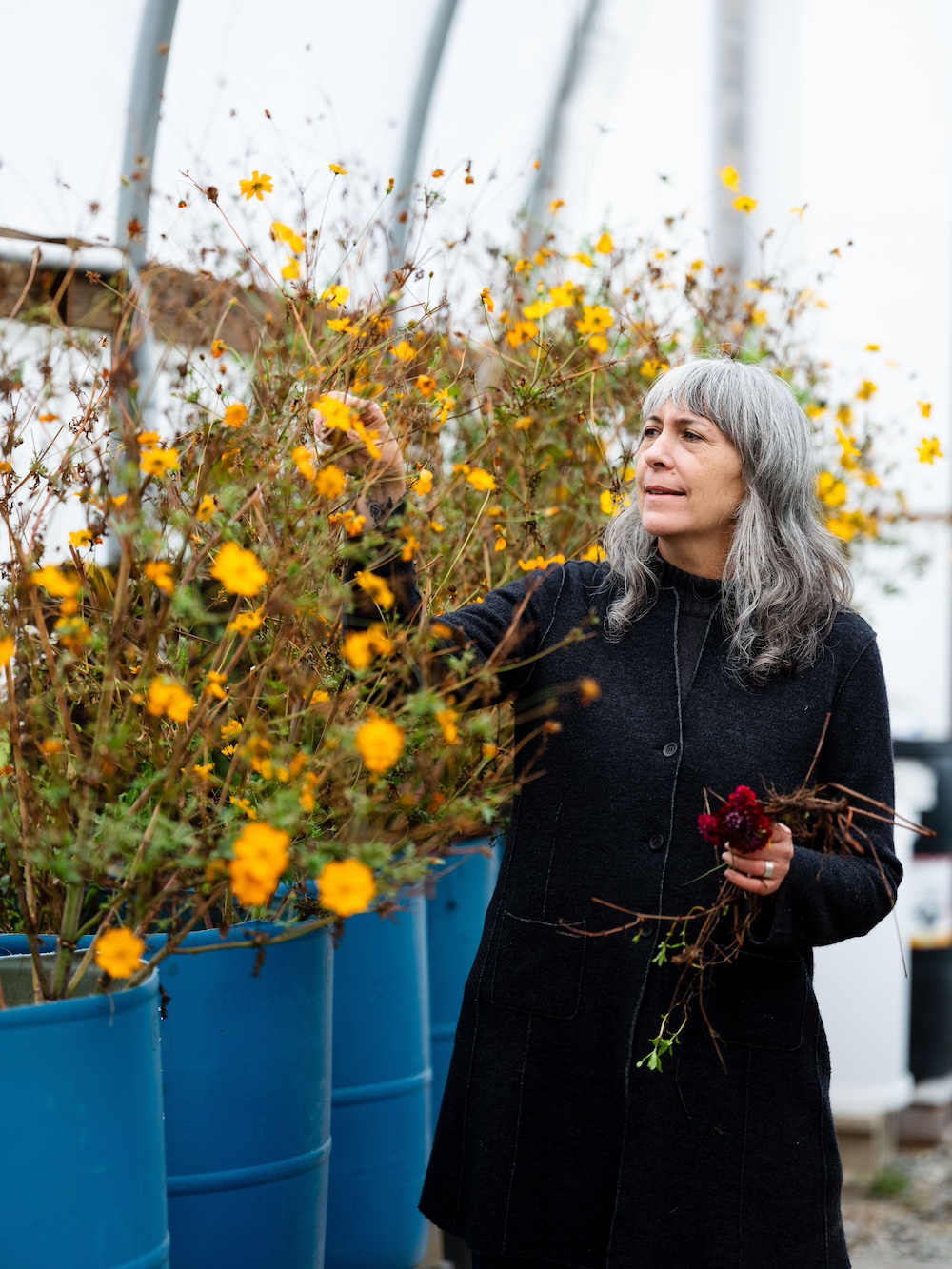
Again we return to the big question: how can we get more farmers to urine fertilize (currently illegal to use in most states) and save money as well? How can urine fertilizing stop the amount of mined materials coming into the U.S. from other countries to make fertilizer?
Going into 2024, we’ll be moving forward based off the current research we did and looking at fermentation of urine. This is a sentence I never thought I’d write as a fashion journalist, but again, here I am. Let’s get out there and save our waters my friends.
Wastewater farming in 2022
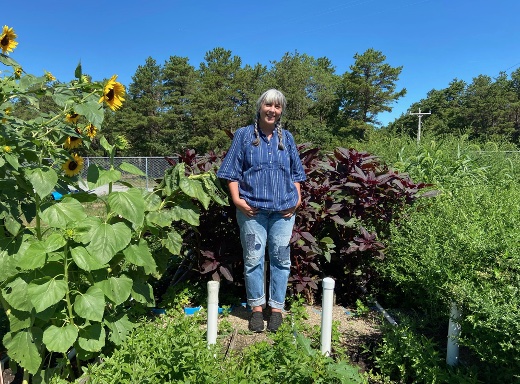
Working alongside Bryan Horsley, MASSTC’s Site Operator all last year, we found that wastewater does in fact more than double the size of dye plants including indigo, madder, Hopi Sunflower, amaranth, calendula and other dye flowers. The water we are using comes from our military base, Joint Base Cape Cod, as well as the county jail. The wastewater, filled with all kinds of nutrients (good and bad), helps in rapid re-growth of plants post-harvest when oftentimes a plant would just die from the pruning. Tests done on the dye plants have shown no real impact of the wastewater on color but I am currently still testing on fabrics.
All last year, Bryan and I grew flowers in test beds with dosing water systems, hydroponics as well as a hill of waste wool + soil, and were very excited and positive re: continued growth even during a drought and record heat temperatures…
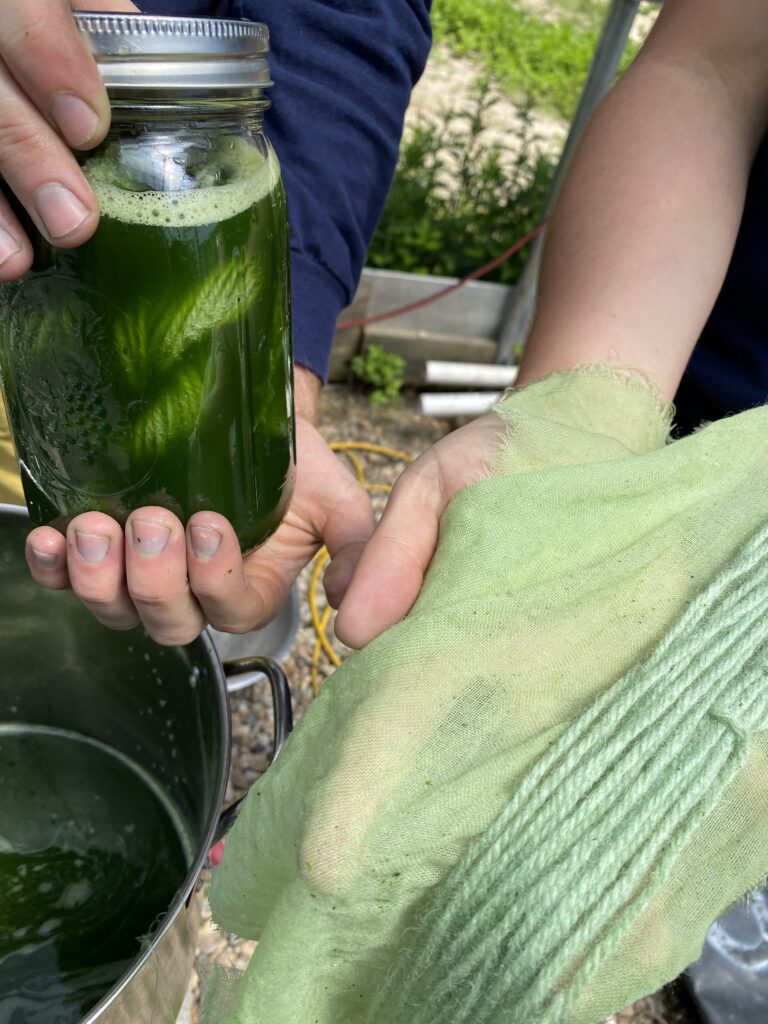
Our intention with this project was and still is, to experiment with using the nutrients in wastewater to grow a variety of plants that can be used to make natural dyes. Bryan says “I hope this project will help demonstrate the value of nutrients in our wastewater and that what we consider ‘waste’ is actually a resource that can readily be used for practical purposes like growing healthy and useful plants, beautiful flowers and making natural dyes. I also see this as a means to alert people to the issue of our habitual wasting of valuable nutrients via our sinks, showers and toilets and the unnecessary pollution of clean water in the process. Change is necessary to achieve sustainability in our water, waste and nutrient systems and I hope this can contribute to that need.”
I couldn’t agree more and hope this project continues to inform and lead ways U.S. natural dye farmers (all farmers!) might farm flowers in a more cost-effective and environmentally beneficial way. As we see climate changing and drought becoming the norm, Bryan and I also hope we can find ways to, as he said above, stop the wasting of nutrient rich wastewater.
Read more here.
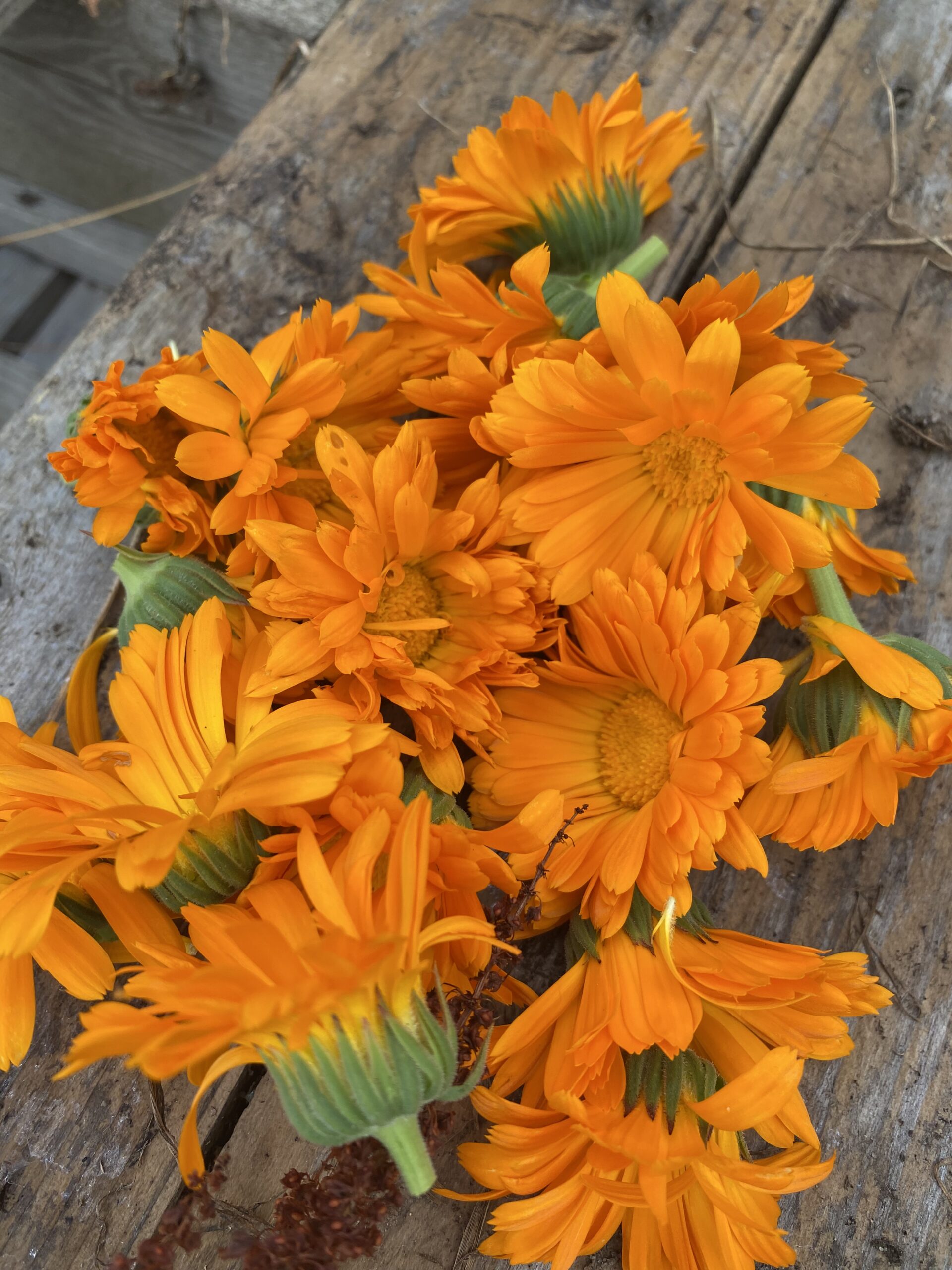
Additional info on wastewater you might like to know more about…
Wastewater is currently polluting local ponds, lakes and oceans. Wastewater is also plentiful as drought bans have gone into effect all summer here on Cape Cod. Not everyone has a controlled site to monitor wastewater so we’re interested in learning how we can scale this to irrigate natural dye and fiber farms on a large scale. We guess that the two biggest challenges we’ll confront during this project and especially when we try to promote these ideas more broadly include acceptance and support of regulators and the general public.
State and local regulators as well as town boards of health, are tasked with keeping communities safe from pathogens and other harmful pollutants. Our approach in reusing wastewater for irrigation of crops must therefore assure that safety and health are of top priority. To address this concern and to assure our project is transferable beyond the research realm, we will work with local boards of health to explore and develop permitting pathways at local farms and/or residences.
Public acceptance and social stigmas surrounding the idea of reusing wastewater is a very challenging issue as we have seen with composting toilets and other systems where we have a more intimate relationship with our waste. It is our intention that with the combination of a well-designed wastewater recycling system, proper permitting with regulators and a healthy dose of education and outreach we can overcome this challenge and build support for this important effort.
Have questions? Email me! amy@senefibershed.org
